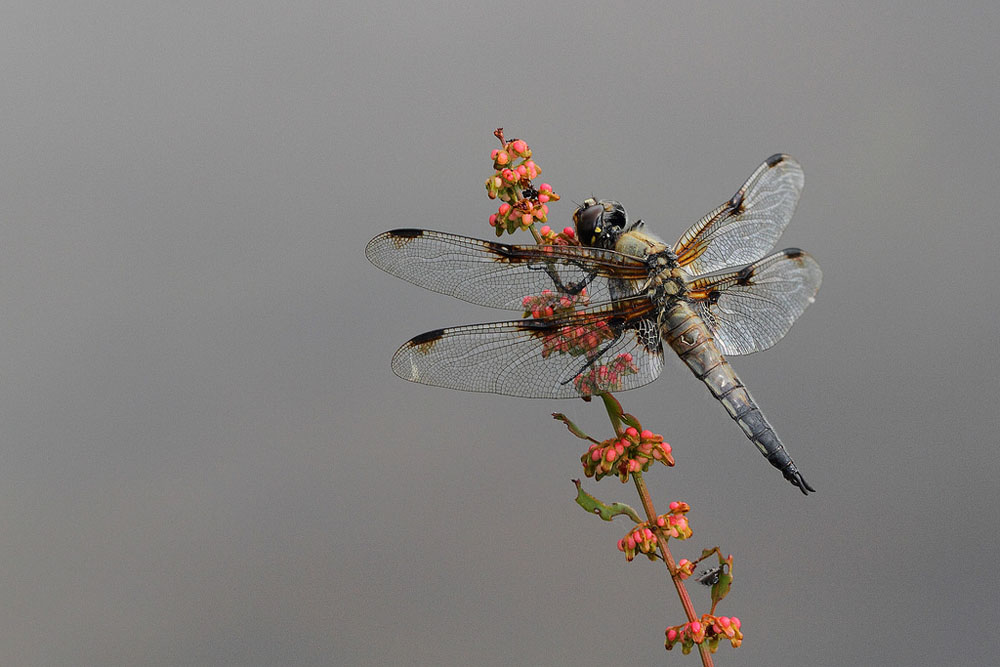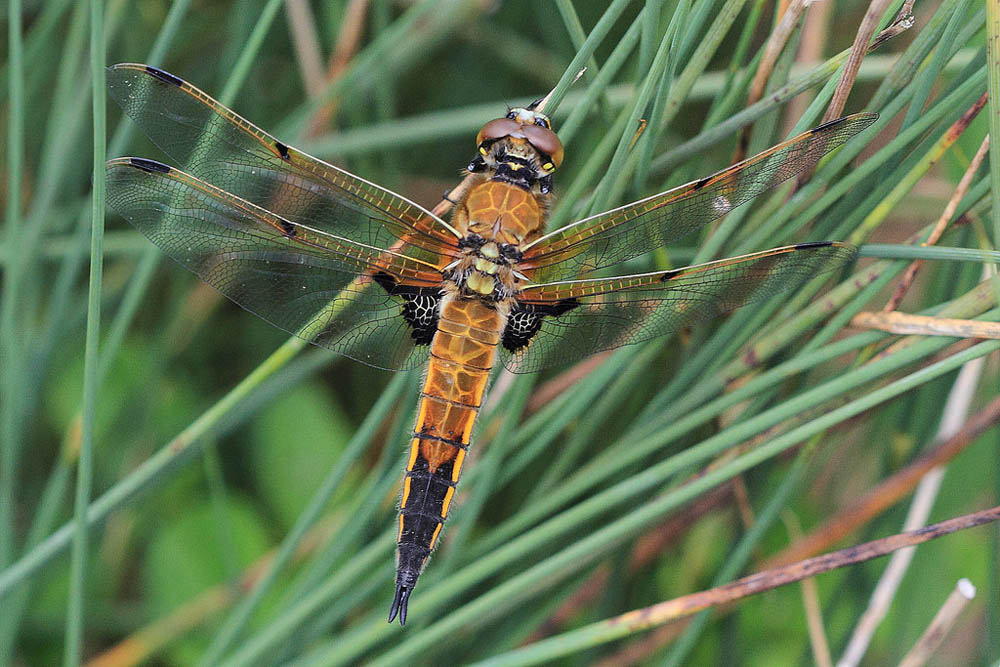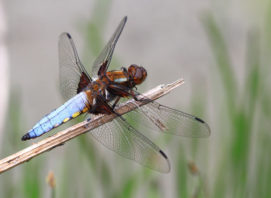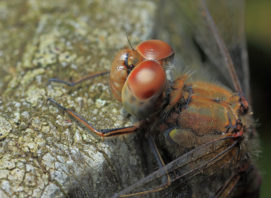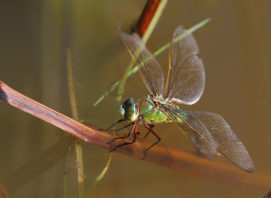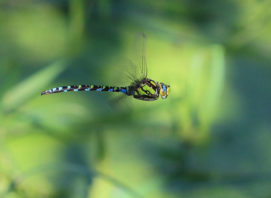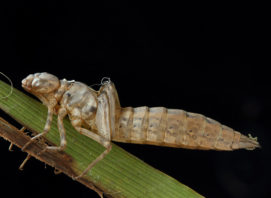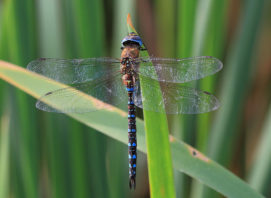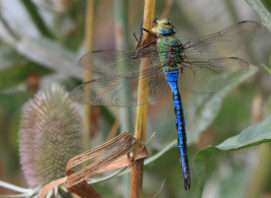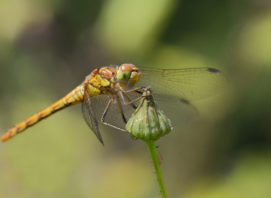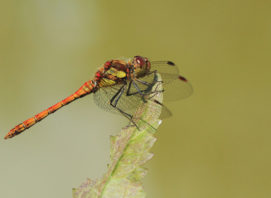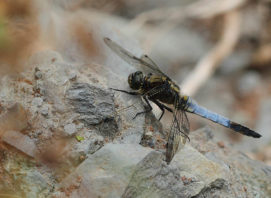Four-spotted Chaser
Pic 1: Very pleased to see my picture of a Four Spotted Chaser (captured back in July 26, 2014) published in the latest March issue of “Wild Planet Photography Magazine”. Although I didn’t win this month’s ‘Wildlife Mentor Competition’ I’m nevertheless pleased with Ross Hoddinott’s comments.
Pic 2: A medium-sized dragonfly, both sexes having brown eyes, thorax and abdomen (this particular specimen is a male). Each wing has a yellow base that extends along the front, diagnostic dark spots at the nodes and like all chasers, extensive blackish patches at the base of the hindwings. Fortunately for the Chaser it’s still too early for Emperor Dragonflies but come July they will pose a real threat! Last year I witnessed Emperors not only making a meal out of Common Darters but also attacking Broad-bodied Chasers. For the moment, there is always the threat of predation from birds and while watching the BBC ‘Spring Watch’ it was amazing to see a wren feed one of her chicks a dragonfly (looked like a Four-spotted Chaser).
The four-spotted chaser is a medium-sized, fairly broad-bodied dragonfly. It is on the wing from the end of May to August and is commonly found on heathland and moorland as well as around ponds, lakes and in woods. Four-spotted chasers are active dragonflies, spending a lot of time hawking over water for insect-prey or to mark out their territories. They mate on the wing and then the female hovers over the water, dipping the tip of her abdomen in, and drops her eggs on to vegetation below the surface.
Both sexes of the four-spotted chaser are golden-brown, getting darker towards the tip of the body and with yellow spots along the sides. Two dark spots at the front edge of each wing give this dragonfly its name and an easily recognisable appearance.

